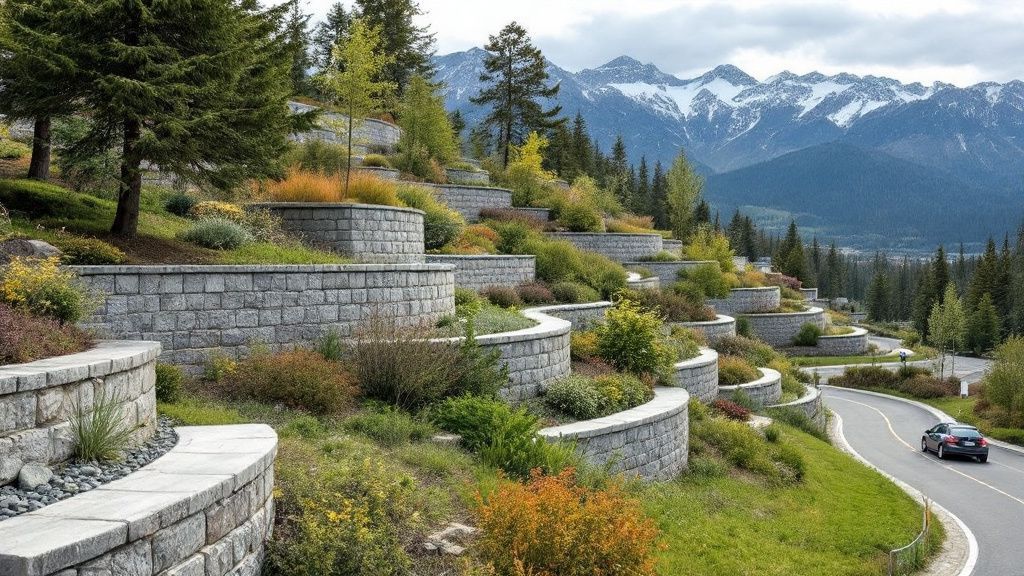
Mastering Anchorage’s Landscape with Effective Retaining Walls
In the heart of Anchorage, Alaska, mastering the art of landscaping often hinges on the strategic use of retaining walls. As a vital component in shaping the local terrain, these structures not only enhance aesthetic appeal but also play a crucial role in erosion control. You encounter the challenge of shifting soils and variable elevations, making retaining wall installation an essential part of adapting to the landscape. Particularly in Anchorage, where moisture and weather conditions constantly reshape the earth, understanding how to build a retaining wall becomes pivotal. By employing effective erosion control solutions, you ensure that your outdoor spaces remain resilient and sustainable.
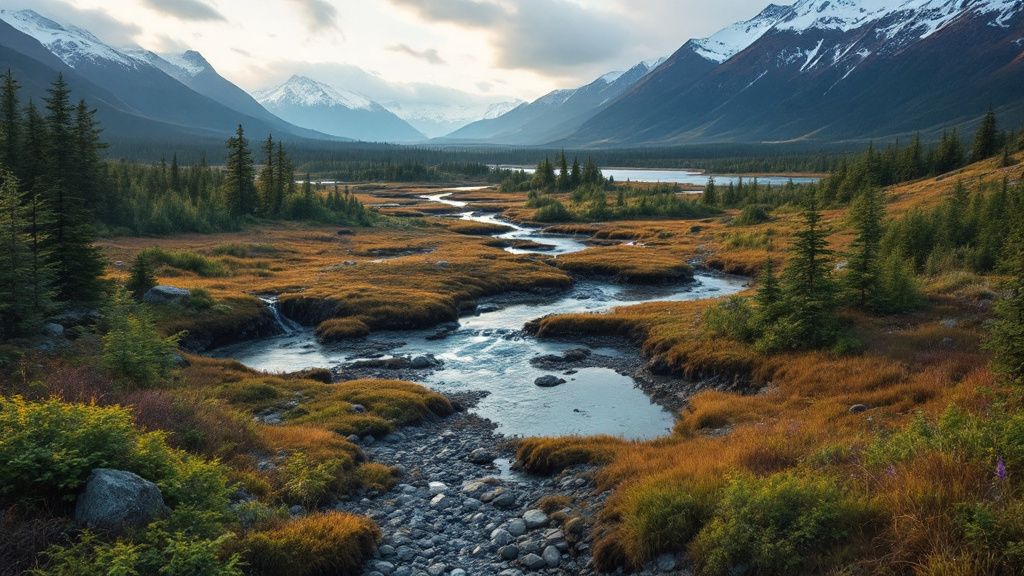
Understanding Anchorage’s Unique Landscape Challenges
Anchorage’s unique landscape presents a set of challenges that are distinct to its geographical location. The region’s varied elevation and diverse soil types constantly test the resilience of outdoor spaces. Did you know that the National Resources Conservation Service reports that Alaska is seeing increased erosion rates in vulnerable areas? This underscores the importance of implementing robust erosion control solutions that mitigate these natural forces, particularly in a place like Anchorage.
You might notice that Anchorage’s climate also contributes to its challenging landscape conditions. With fluctuating temperatures and heavy rainfalls, soil stability can become compromised, leading to increased erosion and potential property damage. Understanding these elements is essential when considering retaining wall installation, as these structures must be designed to withstand the unpredictable forces that shape the land.
Given the town’s beautiful but demanding environment, knowing how to build a retaining wall that caters to Anchorage’s specific needs is invaluable. This involves choosing materials and designs suitable for the harsh Alaskan climate. Whether it’s using frost-resistant materials or proper drainage systems, each step you take in construction ensures long-term effectiveness.
Engaging with local expertise can significantly enhance your approach to these challenges. By consulting professionals familiar with Anchorage’s topography and climate, you can develop robust, tailored erosion control solutions. This collaborative effort not only safeguards your property but also preserves the natural beauty that makes Anchorage so unique.
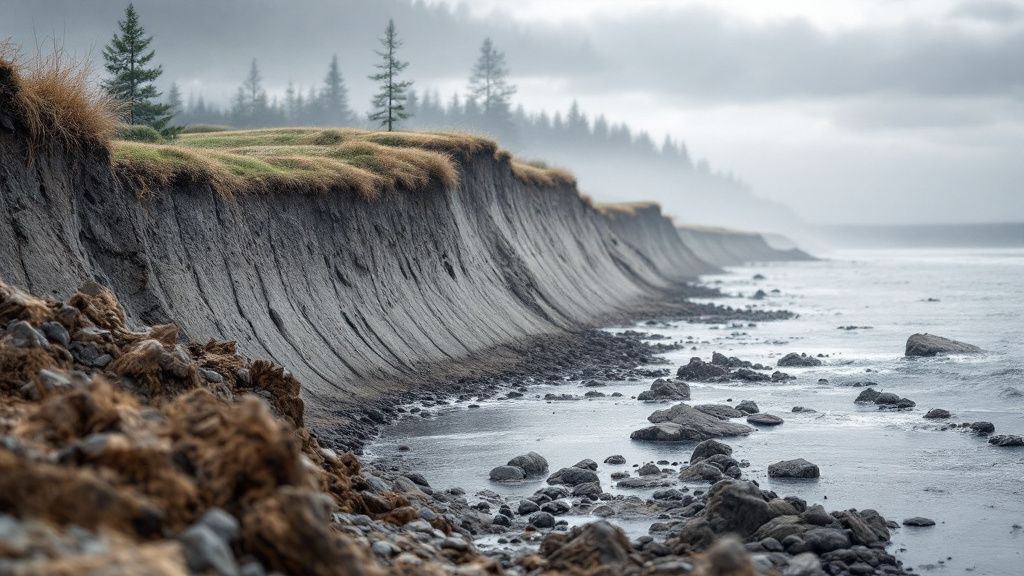
The Importance of Retaining Walls in Erosion Control
Retaining walls are a pivotal tool in managing erosion, especially in Anchorage’s challenging environment. These sturdy structures not only provide vital support against shifting soils but also enhance the stability of your landscape, preserving the integrity of your property. By effectively integrating retaining walls into your outdoor design, you can significantly reduce the risk of erosion, ensuring that your surroundings remain safe and aesthetically pleasing.
The construction of retaining walls requires careful planning and precision, particularly in choosing the right materials that can withstand Anchorage’s extreme weather conditions. You might consider innovative designs tailored to the local climate, which address both functionality and appearance. This principle is central to how to build a retaining wall that withstands the test of time, providing a durable solution to Alaska’s unique challenges.
In the coming years, retaining walls are expected to play an even greater role in erosion control strategies. As the impacts of climate change intensify, the need for adaptable and resilient solutions will grow. You can anticipate an evolution in retaining wall design and materials, incorporating more sustainable practices and technologies that enhance their effectiveness while minimizing environmental impact. By staying ahead of these trends, you can ensure that your landscape remains both beautiful and secure.
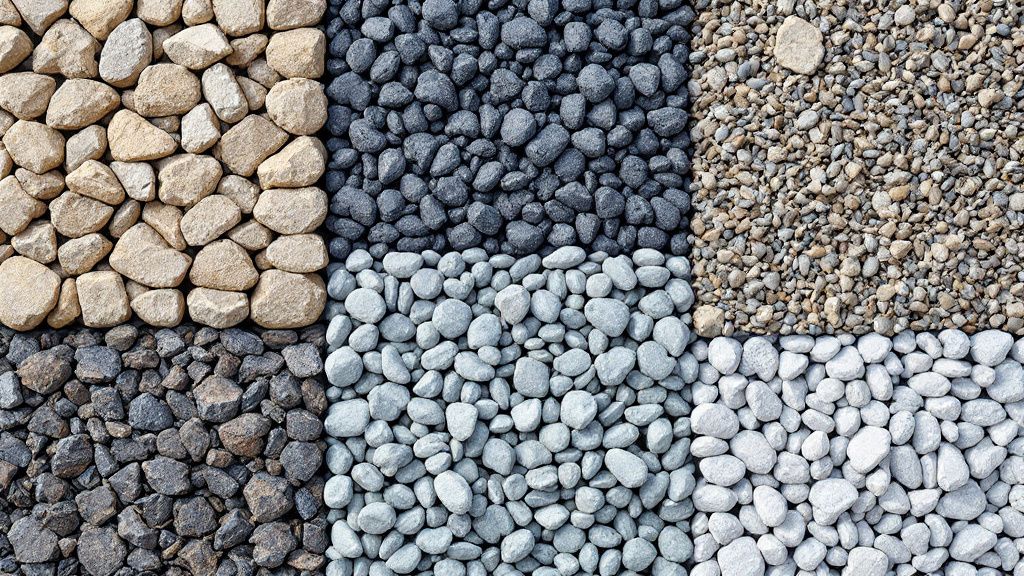
Materials Used in Anchorage Retaining Walls
Materials play a crucial role in the effectiveness of retaining walls, especially in Anchorage’s diverse landscape. Commonly used materials include concrete blocks, natural stone, timber, and gabions. Each possesses unique properties, making them ideal for different aspects of retaining wall installation. For instance, concrete blocks are favored for their durability and ease of use, providing solid support where you need it the most.
Natural stone offers an aesthetic appeal that blends seamlessly with Anchorage’s rugged environment while also being highly durable. Timber, on the other hand, is often selected for its affordability and versatility, although it may require treatment to withstand harsh weather conditions. These options present varied approaches based on your landscape preferences and requirements.
One of the most frequently asked questions about retaining wall materials in Anchorage is: Which material is best for weather resilience? Here’s the answer: concrete and gabions are typically considered the most weather-resistant, as they withstand freeze-thaw cycles better than wood or untreated stone. This resilience is key in crafting erosion control solutions that protect your property long-term.
Selecting the right material involves balancing factors like budget, intended use, and environmental impact. By understanding the strengths and limitations of each material, you can decide how to build a retaining wall that meets your needs while enhancing the beauty and stability of your landscape.
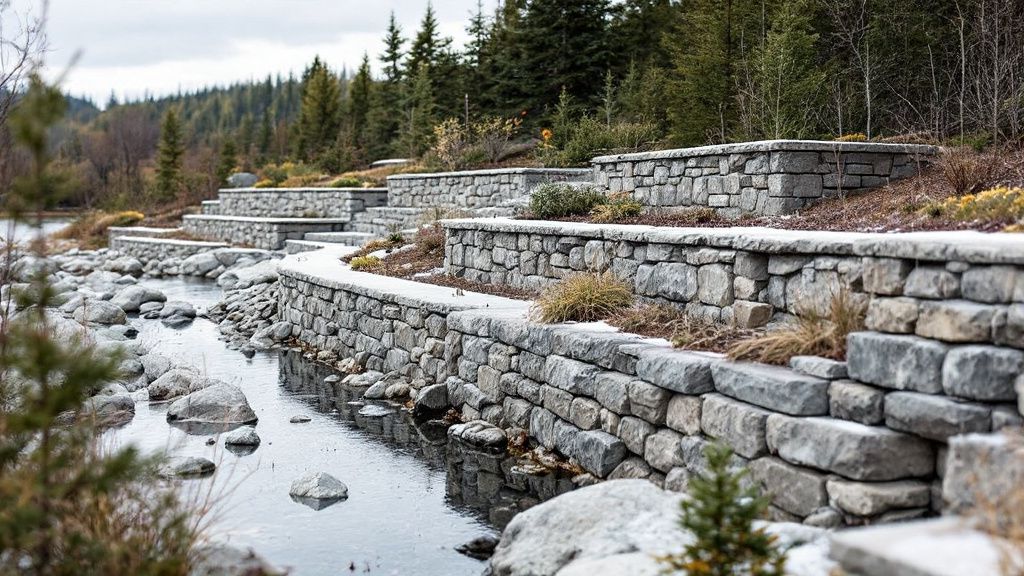
Designing Retaining Walls for Anchorage’s Environment
Designing retaining walls for Anchorage’s environment requires a thoughtful approach that accounts for local weather patterns and terrain. The steep slopes and fluctuating temperatures of the region demand walls that can endure harsh conditions while providing effective erosion control solutions. By tailoring designs to fit these specific challenges, you ensure both functionality and longevity in your landscaping endeavors.
On one hand, some landscaping experts prioritize a minimalist aesthetic, valuing the seamless integration of retaining walls into the natural surroundings. This perspective emphasizes designs that use local materials and mimic the natural landscape for a cohesive look. Meanwhile, other professionals argue that durability should be the primary focus, suggesting more robust structures designed primarily for performance and strength.
When planning your retaining wall installation, you might consider hybrid designs that incorporate elements from both perspectives. The combination of aesthetically pleasing materials with solid engineering can lead to walls that are both visually appealing and structurally sound. Understanding how to build a retaining wall that balances these elements is key to meeting the diverse needs of Anchorage’s dynamic environment.
Depending on your specific landscape needs, including soil type and slope, various design modifications might be necessary. Incorporating drainage solutions and frost protection should be part of your design strategy. By addressing these considerations, you create a sustainable system that not only enhances the beauty of your surroundings but also efficiently manages erosion risks.
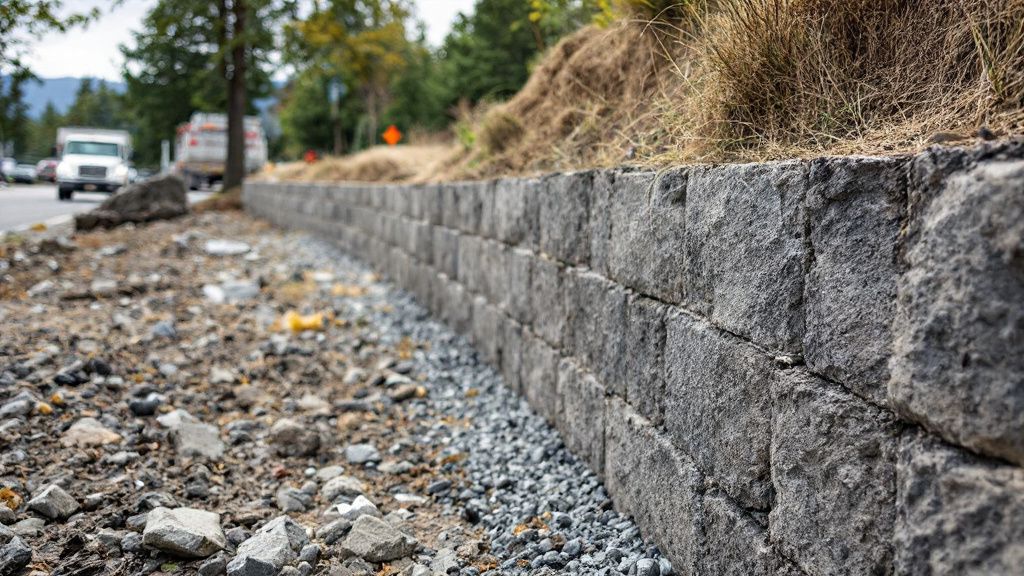
Regulations and Permits for Retaining Wall Construction
Understanding the regulations and permits for retaining wall construction in Anchorage is a crucial step in ensuring a smooth and compliant project. Local ordinances often dictate the requirements for walls over certain heights, making it essential to consult the municipality’s guidelines before starting any installation. This proactive approach helps prevent potential legal issues and ensures your project aligns with local standards.
You might find that permits are required for retaining walls exceeding a particular height or for walls intended to provide critical support to structures. To simplify the process, it’s advisable to gather all necessary documents and permits in advance. This preparation ensures you’re well-equipped to handle any regulatory hurdles and keeps the timeline of your project intact.
To make the most of your retaining wall installation, try engaging with a local professional experienced in Anchorage’s permitting processes. These experts can offer valuable insights and help streamline approvals, saving you time and effort. Partnering with someone who understands local rules and regulations can enhance your overall experience, ensuring your project meets all necessary compliance checks.
When planning how to build a retaining wall, incorporating municipal regulations in the early stages of design can also influence important decisions, such as wall height and material choice. By aligning your project with local codes from the start, you facilitate smoother execution and secure long-term compliance.
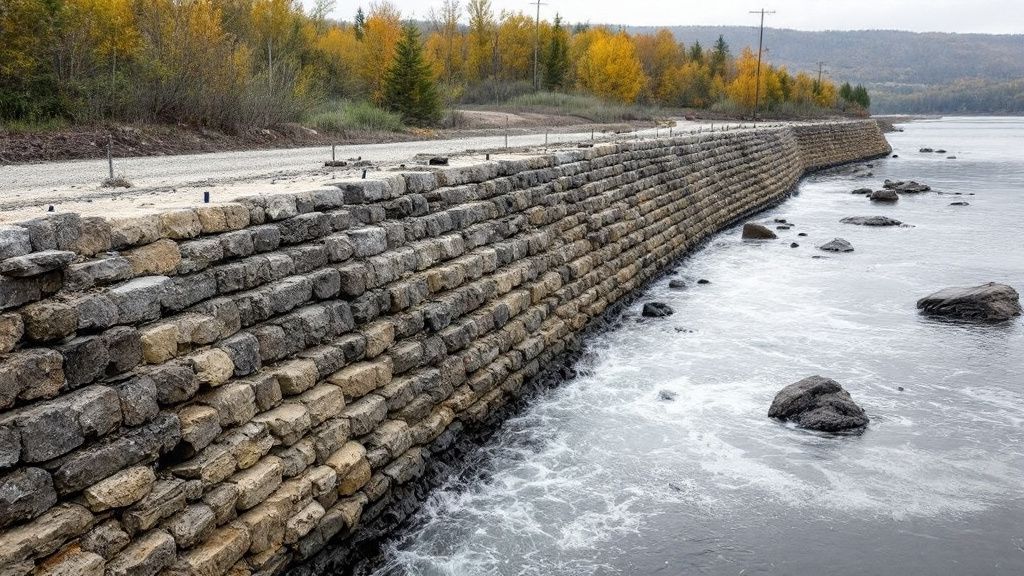
Cost Effectiveness of Retaining Walls in Long-Term Erosion Control
Evaluating the cost-effectiveness of retaining walls in long-term erosion control reveals a compelling balance between investment and protection. While the initial expense may be considerable, the barriers they offer against soil movement and property damage justify their place in your erosion control strategy. These structures are designed to withstand Anchorage’s challenging conditions, ensuring durability and minimizing maintenance costs over time, providing value through sustained performance.
One of the challenges in managing erosion effectively is the fluctuating expenses associated with ongoing repairs and land instability. This issue can be addressed through strategic retaining wall installation, which provides a permanent solution to soil erosion. By leveraging these robust systems, you reduce the frequency and severity of required interventions, ultimately leading to significant cost savings.
Designing a strategy for how to build a retaining wall that caters to specific site conditions can further enhance cost-efficiency. Selecting the right materials and design—those that require minimal upkeep or replacement—helps maintain your budget while safeguarding your landscape. The use of erosion control solutions that specify superior designs tailored to withstand Anchorage’s unique environmental impacts also plays a critical role in extending the longevity and function of your retaining structures.
Besides, a one-time investment in retaining walls positively impacts property value by maintaining scenic and functional landscapes, thus offering financial benefits beyond erosion control. By preventing deterioration and preserving the land’s appearance, retaining walls enhance not only utility but also aesthetic and real estate value. Through careful planning and installation, you assure that your financial investment results in both immediate and far-reaching advantages.